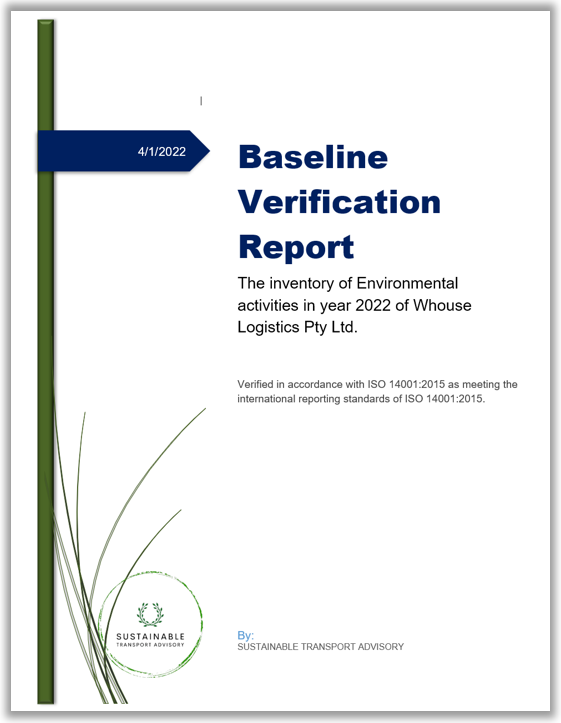
Environmental Reporting
Scope 1, 2 and 3 Reporting
Analyse the metrics, set KPI’s and track your initiatives to develop a sustainable strategy that drives down costs, emissions and improves the environment.

EmissionsTracker
Your key to Sustainability Strategy Development
Establish your Environmental Management Plan
Develop an environmental strategy that drives success
Reduce cost on Energy, Waste, Recycling, People & Business activity
Mitigate environmental risk through baseline recommendations
Strengthen your environmental policy & program with measurable KPI’s
Annual monitoring & measurement reporting on achievements and goals
Involve Workforce, families and the wider community in the sustainability journey
EmissionsTracker is the ultimate carbon footprint solution.
Measure and report your Scope 1, 2 and 3 emissions.
Analyse the metrics, set KPI’s and track your initiatives to develop a sustainable strategy that drives down costs, emissions and improves the environment.
Simplify your sustainability journey with our cutting-edge, easy to use, affordable and accessible online carbon accounting platform. Tailored for transport, logistics, warehousing, SMEs, educational bodies, and government sectors, EmissionsTracker is your partner in achieving sustainability excellence.
EmissionsTracker developed in consultation with Asheville Consulting Group.

EmissionsTracker : Know Your Carbon Footprint
We capture your current environmental activities within your organisation and provide a complete and in-depth analysis and reporting as a base set of measurements for boards & executives to make strategic decisions about the companies future direction or evaluate program achievements and progress.
EmissionsTracker:
Your Comprehensive Solution for Emissions Tracking
Are you looking for a reliable and easy-to-use software to track your organization's carbon footprint and emissions effectively? Look no further than EmissionsTracker!
Our platform is designed to help businesses report on scope 1, 2, and 3 emissions efficiently, allowing you to understand and manage your environmental impact better. With EmissionsTracker, you can streamline the process of collecting, analyzing, and reporting emissions data, saving you time and resources.
Key Features of EmissionsTracker:
Comprehensive Tracking: Monitor emissions across all scopes, providing you with a complete picture of your carbon footprint.
User-Friendly Interface: Our intuitive interface makes it easy for users at all levels to navigate the software smoothly.
Data Accuracy: Ensure the accuracy of your emissions data with our advanced tracking algorithms and verification processes.
Custom Reporting: We can generate custom forms tailored to your organization's specific requirements and regulatory obligations.
Real-Time Updates: Stay informed with real-time updates on emission trends, helping you make informed decisions to reduce your environmental impact.
Make a difference today by choosing EmissionsTracker as your emissions tracking software. Join numerous organizations worldwide that are already benefiting from our comprehensive solution. Let EmissionsTracker be your partner in sustainability!
Contact us now to schedule a demo and start your journey towards a more sustainable future with EmissionsTracker.
Request a Pricing Quote
EmissionsTracker powered by Sustainable Transport Advisory

Sustainability Strategy Development
Good Environmental, Social, and (Corporate) Governance (ESG) can unlock better financial loans and benefits to elevate your business.
Click to enlarge
Our 3 Phases to Baselining your business
Phase 1
Stakeholder engagement
Pre-implementation. Engagement with senior leaders & key stakeholders Confirm scope and data points & materials, data collection processes and the overall program of work.
Phase 2
Data Collection
Field Implementation Phase, which involves the actual collection of data in the selected sites.
Phase 3
Reports & Recommendations
Post – Implementation Phase, which involves tabulating and analyzing the data, disseminating findings and providing the report for ongoing decision-making.
What is an environmental baseline?
Environmental baseline reports are used to inform decision makers about the project or organizations impact on the Environment & community.
Also, to determine the characterization of an organization prior to the development of an Environmental Management System or Project implementation.
What is the purpose of baseline data?
The baseline information is used to assess the effect of the program and to compare what happens before and after it is implemented. It’s difficult to estimate any changes or demonstrate progress without baseline data, so it’s best to capture a baseline as soon as possible.
Why is baseline study important?
The starting point for any project is a baseline survey. It is impossible to know the impact of a project or organizations activities without a baseline. A baseline study is used to inform decision makers about the project or organizations impact on the Environment & community.
What is an example of environmental Baseline assessment?
An overview of the Organizations activities that have an environmental affect. This phase helps identify areas of concern and parts of the organization that needs more in-depth analysis.
A baseline of a warehouse or construction and/or activities can show the initial state of environmental impacts and the data to show the improvements over time. The program proposed modifications (vehicles, recycling, roof & ventilation, water use, solar mods, power consumption, outputs of emissions, waste and recycling).
Protect your Environment. Protect your Business. Protect yourself.
As more organisations report their environmental activities, their peers and competitors are expected to report as well and, a simple position statement or policy is no longer considered good enough; more formal, measured and detailed reporting structures are becoming more commonplace.
Can you afford not to act?
“Companies with strong ESG perform better”
“Improving ESG practices has the potential to increase brand value, enhance customer and employee loyalty, reduce costs (including the cost of capital) and create long-term competitive advantages.”





